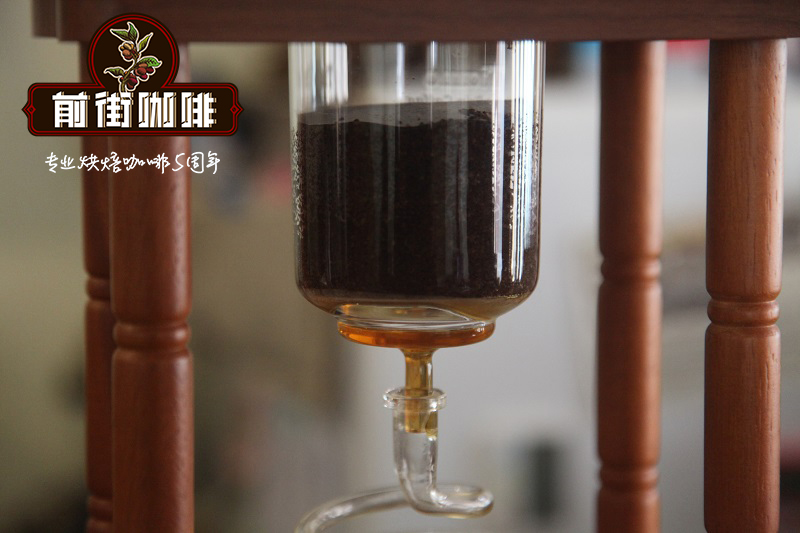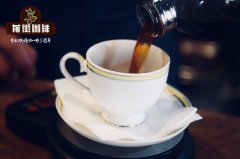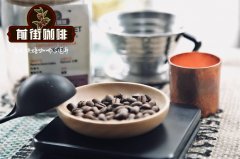Is the Ethiopian Rose Summer geisha Coffee good? Kersa Village Rose Summer Bean Story in Guji producing area

Professional coffee knowledge exchange more coffee bean information please follow the coffee workshop (Wechat official account cafe_style)
Everyone has a dream of rosy summer.
Whether you are a veteran who has been in contact with fine coffee for many years.
Or the "rookie" who just indulged in it.
I must be no stranger to the name Rosa.
She is fruity, sweet and sour, and has a long aftertaste.
Aromas of tropical fruits, apricots, oranges.
It's like walking into a hundred orchards to make people stop.
Elegant, quiet but enchanting
Today, as the top rare variety of coffee, Rosa is well known for its elegant aroma and complex fruit juice flavor. Its footprint can be said to have spread to every corner of the coffee producing areas of the world, whether in its famous coffee estates in Panama or as close as Yunnan coffee producing areas in China. In fact, Ethiopia, the birthplace of this variety, has also begun to produce a lot of high-quality Rosa coffee.
Rosa actually originated near Rosa, a remote town in western Ethiopia, where seeds were rolled over to Kenya, Uganda and Tanzania. It crossed the ocean around 1950-1960 to the Center for Tropical crop Research and higher Education in Costa Rica, and was eventually taken to Panama. At first, because of its low yield and low quality, Rosa rugosa was not welcomed by farmers and was gradually abandoned. It shines brightly and comes from a combination of altitude, rainfall, soil, nutrients, and countless other environmental and horticultural factors. Today, all the flavor logos about Rose Summer seemed like a joke at the time. Up to now, there is an upsurge of planting rose summer like a table all over the world, but in my opinion, Panama is still the most representative. The success of a cup of coffee is not just a factor of soil or weather or treatment, it is a real coincidence.
This batch of Rosa Coffee comes from the Jinlana treatment Station in Ethiopia's legal Yegashafi region, which was established in 2014 under the charge of Mr. Israel Degefa. The area where the treatment station is located covers an area of up to 700ha of coffee, mostly in uncultivated areas, with fertile soil and shade trees. This batch of Rosa coffee is dried for 14-20 days with artificially picked all-red fruits for off-the-ground sun treatment.
It has ripe blueberry and white peach flavors, with a long sweetness, similar to a cup of ripe tropical fruit juice.
Kersa Village in the Asian Guji producing area of Ethiopian Coffee Oromi
Located at the junction of Kochel and Glena Abaya
The soil here is fertile and the climate is suitable.
Look up at the unpruned rainforest
It is the hometown of rosy summer and quiet all over the world.
Hand-harvested all-red cherry fruit
Sun treatment 14-20 days
Let the raw coffee beans fully absorb the sweet and sour taste of pectin
When the summer of Panama has been hyped to a sky-high price.
The primitive species of Rosa from the place of origin of coffee
But it is like a clear stream flowing silently all the time
Due to the lack of too much commercial hype
And later human intervention.
The bean grain size of the original species of Ethiopian coffee is slightly uneven.
But in order to let more people taste the charm of rosy summer
Such an approachable price
It's really jubilant.
END
Important Notice :
前街咖啡 FrontStreet Coffee has moved to new addredd:
FrontStreet Coffee Address: 315,Donghua East Road,GuangZhou
Tel:020 38364473
- Prev

Ethiopian GUJI Ancient Treasure Coffee Bean Story _ description of the Flavor of the Ethiopian Native species Rosa hand Chong
Professional coffee knowledge exchange more coffee bean information please follow the coffee workshop (Wechat official account cafe_style) Ethiopia Yirgacheffe Gelana Station Natural Geisha Coffee Ethiopian Coffee-Yega Xuefei birthday roses Xia Jinlana processing station special batches of coffee beans raspberry blueberry juice white peach origin: Kersa Village, Tor
- Next

Does Ethiopian coffee taste good in the sun?-introduction to the grading system of sun-cured Essex coffee beans
Professional coffee knowledge exchange more information about coffee beans please follow the coffee workshop (Wechat official account cafe_style) of all the coffee producing countries, Ethiopia is probably the most eye-catching one. In addition to the unique and outstanding coffee produced in the country, the mysterious legends related to the local coffee add to its charm. Ethiopian coffee with unrestrained floral and fruity aromas
Related
- Detailed explanation of Jadeite planting Land in Panamanian Jadeite Manor introduction to the grading system of Jadeite competitive bidding, Red bid, Green bid and Rose Summer
- Story of Coffee planting in Brenka region of Costa Rica Stonehenge Manor anaerobic heavy honey treatment of flavor mouth
- What's on the barrel of Blue Mountain Coffee beans?
- Can American coffee also pull flowers? How to use hot American style to pull out a good-looking pattern?
- Can you make a cold extract with coffee beans? What is the right proportion for cold-extracted coffee formula?
- Indonesian PWN Gold Mandrine Coffee Origin Features Flavor How to Chong? Mandolin coffee is American.
- A brief introduction to the flavor characteristics of Brazilian yellow bourbon coffee beans
- What is the effect of different water quality on the flavor of cold-extracted coffee? What kind of water is best for brewing coffee?
- Why do you think of Rose Summer whenever you mention Panamanian coffee?
- Introduction to the characteristics of authentic blue mountain coffee bean producing areas? What is the CIB Coffee Authority in Jamaica?

